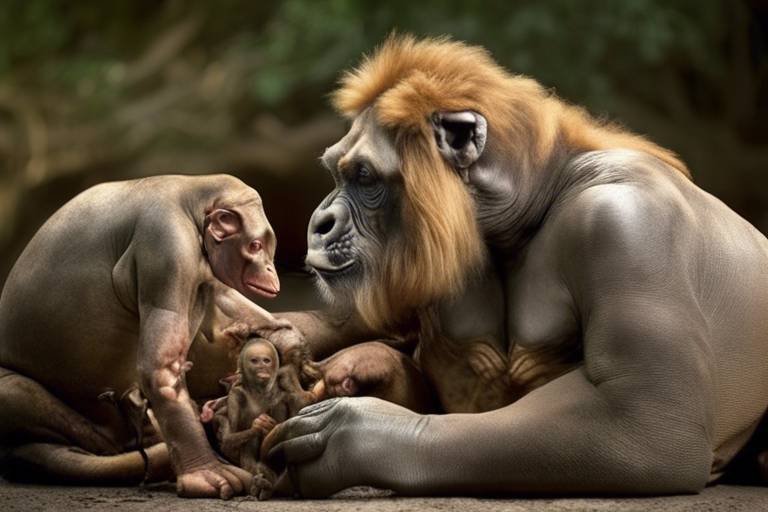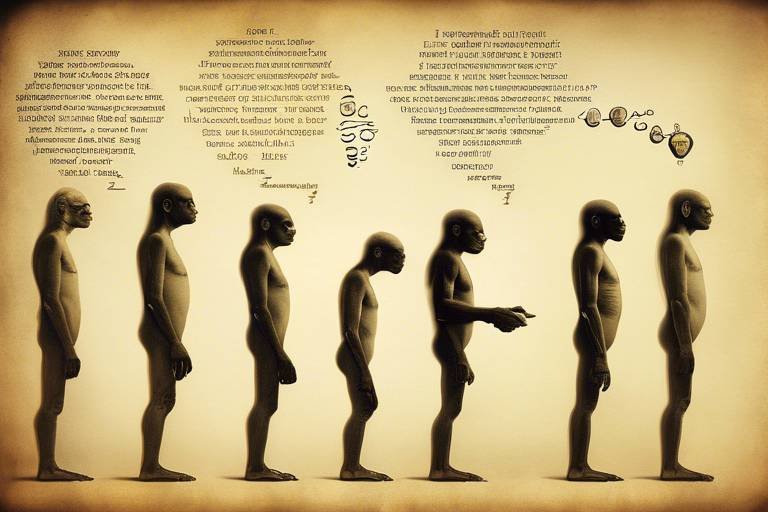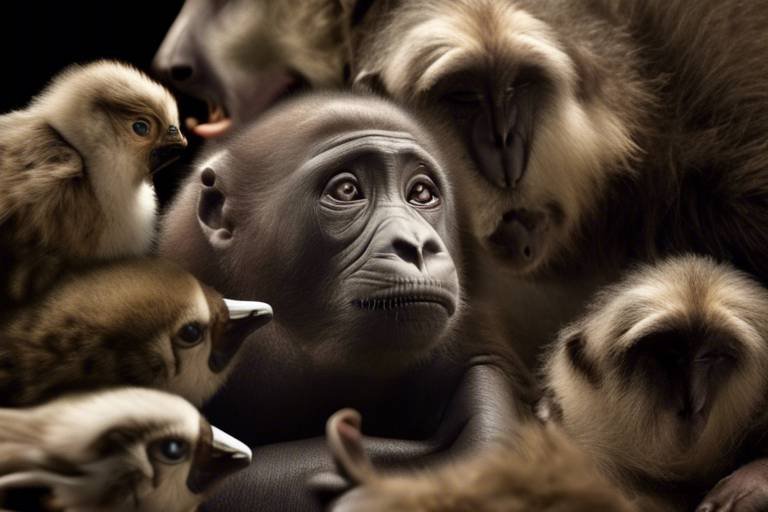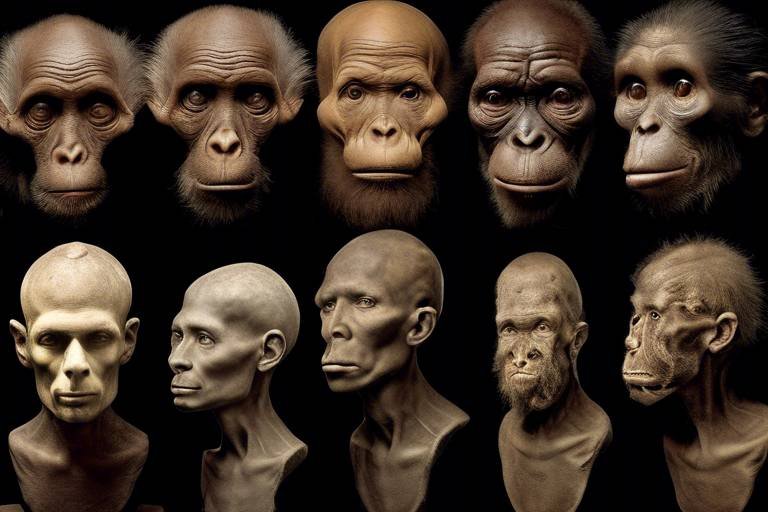Is Human Consciousness Unique in the Animal Kingdom?
When we ponder the question of whether human consciousness is unique in the animal kingdom, we embark on a fascinating journey through the realms of evolution, neuroscience, and philosophy. Just think about it: what truly sets us apart from our animal counterparts? Is it our ability to create complex languages, or perhaps our capacity to reflect on our own existence? This article aims to unravel these complexities, shedding light on the intricate tapestry of consciousness that weaves through both human and animal experiences.
The concept of consciousness itself is a slippery one, often described as the state of being aware of and able to think about one's own existence, sensations, thoughts, and surroundings. While humans may have a distinct form of consciousness, the question remains—do other animals experience a form of consciousness too? To answer this, we must delve into the evolutionary history of consciousness, exploring how it has developed from simple organisms to the intricate thought processes we exhibit today.
As we navigate through this exploration, we will examine the neurological underpinnings of consciousness, looking at how brain structures differ across species. For instance, the size and complexity of the brain play significant roles in determining consciousness levels. It's not merely about having a bigger brain; the organization and connectivity of neurons matter just as much. The human neocortex, a critical region for higher-order thinking, has evolved to support our unique cognitive abilities, but how does it compare to the brains of other animals?
Furthermore, we must consider behavioral indicators of consciousness. Many animals exhibit remarkable problem-solving skills, social interactions, and even signs of self-awareness. But what do these behaviors tell us about their conscious experiences? By examining these aspects, we can gain a better understanding of the spectrum of consciousness across different species.
Ultimately, the question of whether human consciousness is unique is not just a scientific inquiry; it's also a philosophical one. Different philosophical perspectives—such as dualism and materialism—offer varying interpretations of consciousness and its implications for identity and existence. As we ponder these profound questions, we must also consider the ethical ramifications of our understanding of consciousness in animals and how it influences our treatment of them.
- What is consciousness? Consciousness is the state of being aware of and able to think about one's own existence, sensations, thoughts, and surroundings.
- Do animals have consciousness? While animals may not experience consciousness in the same way humans do, many species exhibit behaviors that suggest varying levels of consciousness.
- What role does the brain play in consciousness? The brain's structure and complexity are crucial in determining consciousness levels, with specific areas like the neocortex playing significant roles in higher-order thinking.
- How do we measure consciousness in animals? Researchers use various behavioral indicators, such as problem-solving abilities and self-awareness tests, to assess consciousness in animals.
- What are the ethical implications of animal consciousness? Understanding consciousness in animals raises ethical questions about their treatment and rights, influencing how we interact with non-human species.
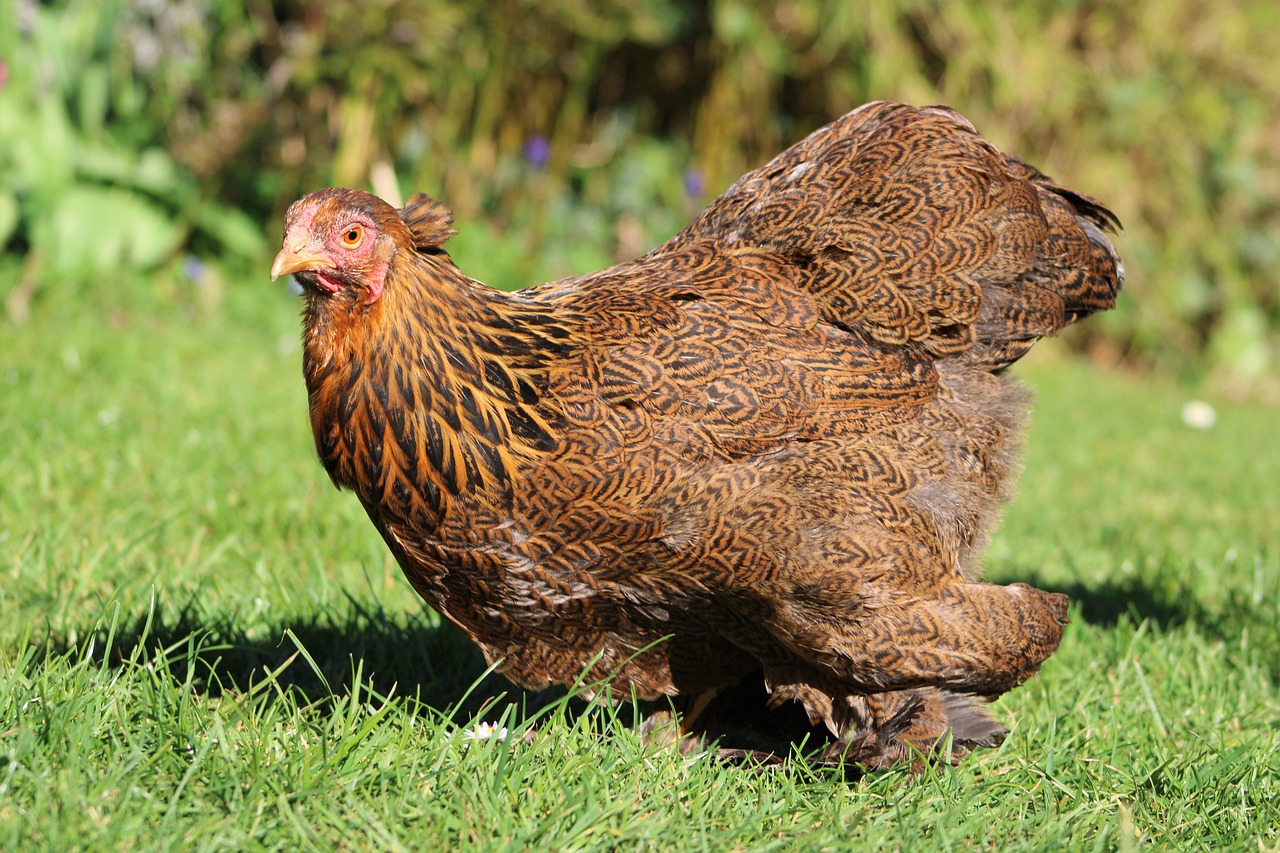
The Evolution of Consciousness
Understanding the evolution of consciousness is like piecing together a grand puzzle that spans millions of years. From the simplest single-celled organisms to the intricate thought processes of modern humans, consciousness has undergone a remarkable transformation. This journey begins with the most basic forms of life, where responses to stimuli were purely instinctual. Imagine a tiny amoeba, floating through water, reacting to light or food without any awareness of its actions. As organisms evolved, so did their capacity for consciousness, leading to more complex behaviors and cognitive abilities.
As we traverse through evolutionary history, we encounter species that exhibit more sophisticated forms of awareness. For example, the development of the nervous system allowed for improved sensory processing, enabling animals to not only react but also to learn from their environments. This progression is evident in species such as fish and amphibians, which display rudimentary forms of problem-solving and social interaction. Fast forward to mammals, particularly primates, and we see a significant leap in cognitive capabilities, including the ability to use tools, communicate, and form intricate social structures.
But what exactly sets human consciousness apart? One of the key factors is the expansion of the brain, particularly the neocortex, which is responsible for higher-order thinking. This part of the brain has grown in size and complexity, allowing for abstract thought, planning, and self-reflection. To illustrate this, let's take a look at a comparative table of brain size and neocortex development across different species:
| Species | Brain Size (grams) | Neocortex Ratio (%) |
|---|---|---|
| Amoeba | 0.0001 | 0 |
| Fish | 5 | 5 |
| Primates | 100-300 | 30-50 |
| Humans | 1400 | 76 |
This table highlights not only the increase in brain size but also the significant growth of the neocortex in humans compared to other species. The larger neocortex is associated with advanced cognitive functions, making it a cornerstone of what we consider consciousness today.
Additionally, the evolution of consciousness is not merely about size; it’s about the intricate organization of neural networks. The way neurons connect and communicate can dramatically affect cognitive abilities. For instance, the complex social structures of elephants and dolphins hint at a form of consciousness that includes empathy and emotional awareness, suggesting that consciousness exists on a spectrum. As we delve deeper into this fascinating topic, it's essential to recognize that consciousness is not a binary trait but rather a rich tapestry woven from the threads of evolution, biology, and behavior.
In summary, the evolution of consciousness is a multifaceted journey that showcases the incredible adaptability of life on Earth. From simple reactions to complex thought processes, each step in this evolution has contributed to our understanding of what it means to be conscious. As we continue to study and explore this topic, we may find that the boundaries of consciousness extend far beyond what we currently perceive, inviting us to reconsider our place in the animal kingdom.
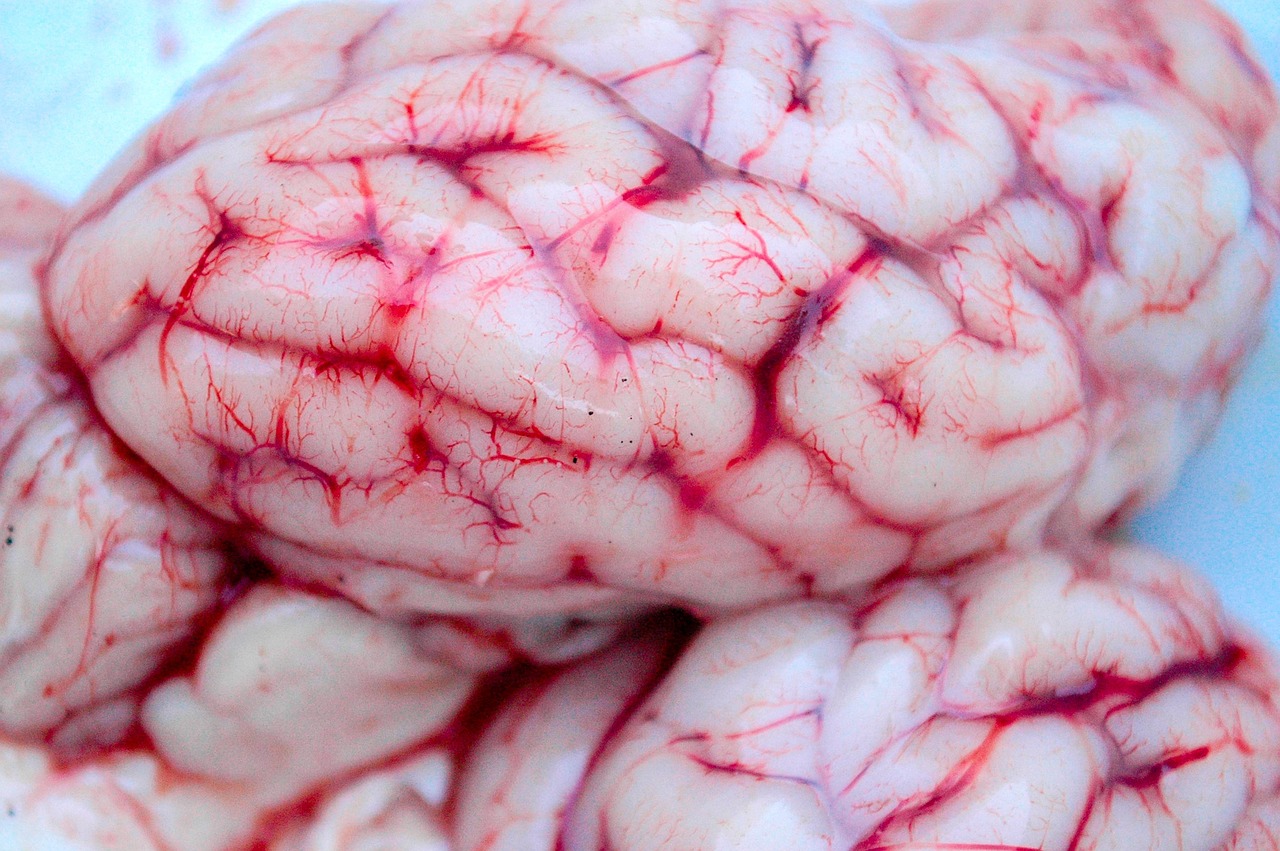
Neurological Underpinnings
The study of consciousness is deeply intertwined with the workings of the brain. To understand what sets human consciousness apart, we must first explore the that contribute to our unique cognitive abilities. The human brain, with its intricate architecture and complex neural networks, plays a pivotal role in shaping our thoughts, emotions, and perceptions. When we compare the human brain to those of other species, we begin to see significant differences that may explain why our consciousness appears more advanced.
At the core of this exploration is the neocortex, a region of the brain that is particularly well-developed in humans. This part of the brain is associated with higher-order functions such as reasoning, abstract thinking, and language. In fact, the neocortex constitutes about 76% of the human brain's total volume, a stark contrast to other animals. For instance, while elephants and dolphins also possess large brains, their neocortex is not as proportionally developed as in humans. This raises the question: does a larger neocortex equate to higher consciousness?
To further illustrate the differences, consider the following table that compares the neocortex size across various species:
| Species | Neocortex Size (% of Total Brain Volume) |
|---|---|
| Humans | 76% |
| Dolphins | 50% |
| Chimpanzees | 35% |
| Dogs | 20% |
This table highlights a clear trend: as we move down the list from humans to dogs, the proportion of neocortex decreases. However, it's not just about size. The organization of neural networks is equally crucial. Humans exhibit a greater degree of connectivity between different brain regions, allowing for more complex processing of information. This is akin to a well-organized library where every book is in its right place, making it easier to find and connect ideas, compared to a disorganized pile of books where information is scattered and hard to access.
Moreover, comparative brain studies have provided fascinating insights into how consciousness manifests differently across species. For instance, research using advanced imaging techniques has shown that humans and primates exhibit distinct patterns of brain activity when engaged in tasks requiring problem-solving and social interactions. This suggests that the way we process information and relate to our environment is fundamentally different from other animals.
In conclusion, the neurological underpinnings of consciousness reveal a complex interplay of brain structure, size, and connectivity. While many animals demonstrate remarkable cognitive abilities, the unique organization and development of the human brain may be what ultimately sets us apart in the grand tapestry of consciousness.
- What role does the neocortex play in human consciousness? The neocortex is responsible for higher-order functions such as reasoning, abstract thinking, and language, which are crucial for our unique form of consciousness.
- How do brain size and complexity correlate with consciousness? While larger brains can indicate greater cognitive abilities, the organization and connectivity of neural networks are equally important in determining consciousness levels.
- Are there other animals with advanced consciousness? Some animals, like dolphins and elephants, show signs of advanced cognitive abilities, but their brain structures differ significantly from humans.

Brain Size and Complexity
The relationship between brain size and complexity is one of the most intriguing aspects of understanding consciousness across species. It's not just about having a bigger brain; it's about how that brain is structured and organized. In fact, studies have shown that the neural density and the connectivity of neurons can significantly impact cognitive abilities. For instance, while elephants have larger brains than humans, the intricate neocortex in humans is more densely packed with neurons, which allows for advanced cognitive functions.
To illustrate this point, consider the following comparison of brain characteristics across several species:
| Species | Brain Size (grams) | Neocortex Ratio (%) | Estimated Intelligence Level |
|---|---|---|---|
| Human | 1400 | 76 | High |
| Chimpanzee | 400 | 30 | Moderate |
| Elephant | 6000 | 33 | Moderate |
| Dolphin | 1500 | 50 | High |
This table highlights that while size may play a role, the neocortex ratio—the proportion of the brain that is involved in higher-order functions—often correlates more closely with intelligence and consciousness levels. The human neocortex is not only larger in absolute terms but also more developed in relation to our overall brain size. This complexity allows for advanced reasoning, abstract thinking, and intricate social interactions.
Moreover, the organization of neural networks is crucial. In humans, the brain exhibits a high degree of functional specialization, where different regions are dedicated to specific tasks, such as language, problem-solving, and emotional regulation. This specialization is less pronounced in some other species, which may rely more on generalized brain functions. Thus, it's clear that merely having a larger brain doesn't equate to higher consciousness; it’s the combination of size, complexity, and organization that truly matters.
In essence, understanding the nuances of brain size and complexity gives us a clearer picture of how consciousness might manifest differently across species. As we continue to explore these differences, we may uncover even more fascinating insights into the minds of our fellow creatures.

Neocortex and Conscious Thought
The neocortex is often hailed as the crown jewel of the mammalian brain, playing a pivotal role in what we consider to be conscious thought. This intricate layer of the brain is responsible for higher-order functions such as perception, reasoning, and decision-making. But what exactly sets the human neocortex apart from those of other species? To understand this, we must dive into its structure and function.
In humans, the neocortex is significantly larger and more complex than in other animals. It is estimated that the human neocortex accounts for about 76% of the total brain volume, compared to only about 29% in rats and around 50% in monkeys. This substantial difference raises intriguing questions about the relationship between brain structure and the capacity for conscious thought. The increased size and complexity allow for more sophisticated neural connections, enabling us to engage in abstract thinking and complex social interactions.
One of the most fascinating aspects of the neocortex is its layered structure. The neocortex is composed of six distinct layers, each with a unique function and type of neuron. This organization facilitates advanced processing capabilities, allowing humans to integrate sensory information, recall memories, and even imagine future scenarios. For instance, the upper layers are primarily involved in sensory perception, while the deeper layers are linked to motor functions and higher cognitive processes. This layered architecture is not as pronounced in the neocortex of other animals, which may explain the differences in cognitive abilities.
Additionally, studies have shown that the neocortex is highly adaptable, a trait known as neuroplasticity. This means that the brain can reorganize itself by forming new connections in response to learning and experience. This adaptability is a crucial factor in our ability to develop language, culture, and complex social structures. In contrast, while some animals exhibit a degree of neuroplasticity, it is generally less pronounced, suggesting a limitation in their cognitive flexibility and conscious thought.
Furthermore, the neocortex is intricately connected to other brain regions, such as the limbic system, which is involved in emotions and memory. This connection allows for a rich tapestry of conscious experience, where emotions can influence decision-making and complex thought processes. In many animals, these connections are less developed, which may result in a more instinctual and less reflective mode of processing information.
In summary, the neocortex is a crucial component of human consciousness, providing the necessary framework for advanced cognitive functions. Its size, complexity, and adaptability set it apart from the neocortex of other animals, suggesting that while many species exhibit varying levels of consciousness, the depth and richness of human conscious thought are unparalleled. Understanding this unique aspect of our brain not only sheds light on what makes us distinctly human but also opens the door to exploring the consciousness of other species.
- What is the neocortex?
The neocortex is the outermost layer of the cerebral cortex in mammals, responsible for higher-order brain functions such as sensory perception, cognition, and decision-making.
- How does the neocortex differ in humans compared to other animals?
In humans, the neocortex is larger and more complex, accounting for a greater percentage of total brain volume, which enables advanced cognitive abilities and conscious thought.
- What role does neuroplasticity play in consciousness?
Neuroplasticity allows the brain to adapt and reorganize itself in response to learning and experiences, which is essential for developing complex cognitive functions and consciousness.

Comparative Brain Studies
The field of comparative brain studies offers fascinating insights into the differences and similarities in brain function across species, particularly when it comes to understanding consciousness. Researchers have employed various methodologies to explore how the brains of different animals operate, revealing significant variations that may contribute to the unique cognitive abilities observed in humans. One of the most compelling aspects of these studies is the examination of brain activity patterns, which can be indicative of the underlying mechanisms of consciousness.
For instance, neuroimaging techniques, such as functional magnetic resonance imaging (fMRI), have enabled scientists to visualize brain activity in real-time. These studies often highlight that while many animals possess complex brains, the patterns of brain activity in humans tend to be more intricate and organized. This complexity is not solely a matter of size; rather, it involves the interconnectivity of neural networks and the specific regions of the brain that are activated during various tasks.
To illustrate these differences, consider the following table that summarizes key findings from comparative brain studies:
| Species | Brain Size (g) | Neocortex Ratio | Notable Cognitive Abilities |
|---|---|---|---|
| Human | 1400 | 0.29 | Advanced problem-solving, abstract thinking |
| Dolphin | 1500 | 0.20 | Complex social behaviors, vocal mimicry |
| Chimpanzee | 400 | 0.14 | Tool use, social learning |
| Elephant | 6000 | 0.16 | Memory, empathy |
This table illustrates that while some animals possess larger brains, it’s the ratio of the neocortex—the part of the brain associated with higher-order functions—that plays a crucial role in cognitive capabilities. For example, humans have a relatively high neocortex ratio, which correlates with our advanced cognitive functions like language and abstract reasoning.
Additionally, comparative studies often reveal that certain animals exhibit similar brain structures to humans, albeit with differences in organization and connectivity. For instance, the presence of a well-developed neocortex in dolphins points to their advanced social behaviors and communication skills, suggesting that consciousness may not be exclusive to humans. However, the way these brain structures function can vary significantly, leading to different manifestations of consciousness across species.
As we delve deeper into these comparative studies, we uncover not just the physical differences but also the potential implications for understanding animal behavior and cognition. The insights gained from these studies challenge us to rethink our definitions of consciousness and how it might be experienced differently across the animal kingdom. Ultimately, the question remains: how do these neurological differences shape the subjective experiences of various species? The exploration of consciousness continues to be a rich field of inquiry, revealing more layers of complexity than we might have initially imagined.
- What is consciousness? Consciousness refers to the state of being aware of and able to think about one's own existence, thoughts, and surroundings.
- Do animals have consciousness? Many studies suggest that various animals exhibit forms of consciousness, though the extent and nature may differ from human consciousness.
- How do scientists study consciousness in animals? Researchers use techniques like neuroimaging, behavioral tests, and comparative anatomy to understand consciousness across species.
- What role does the neocortex play in consciousness? The neocortex is crucial for higher-order cognitive functions, and its development is often linked to the complexity of consciousness.
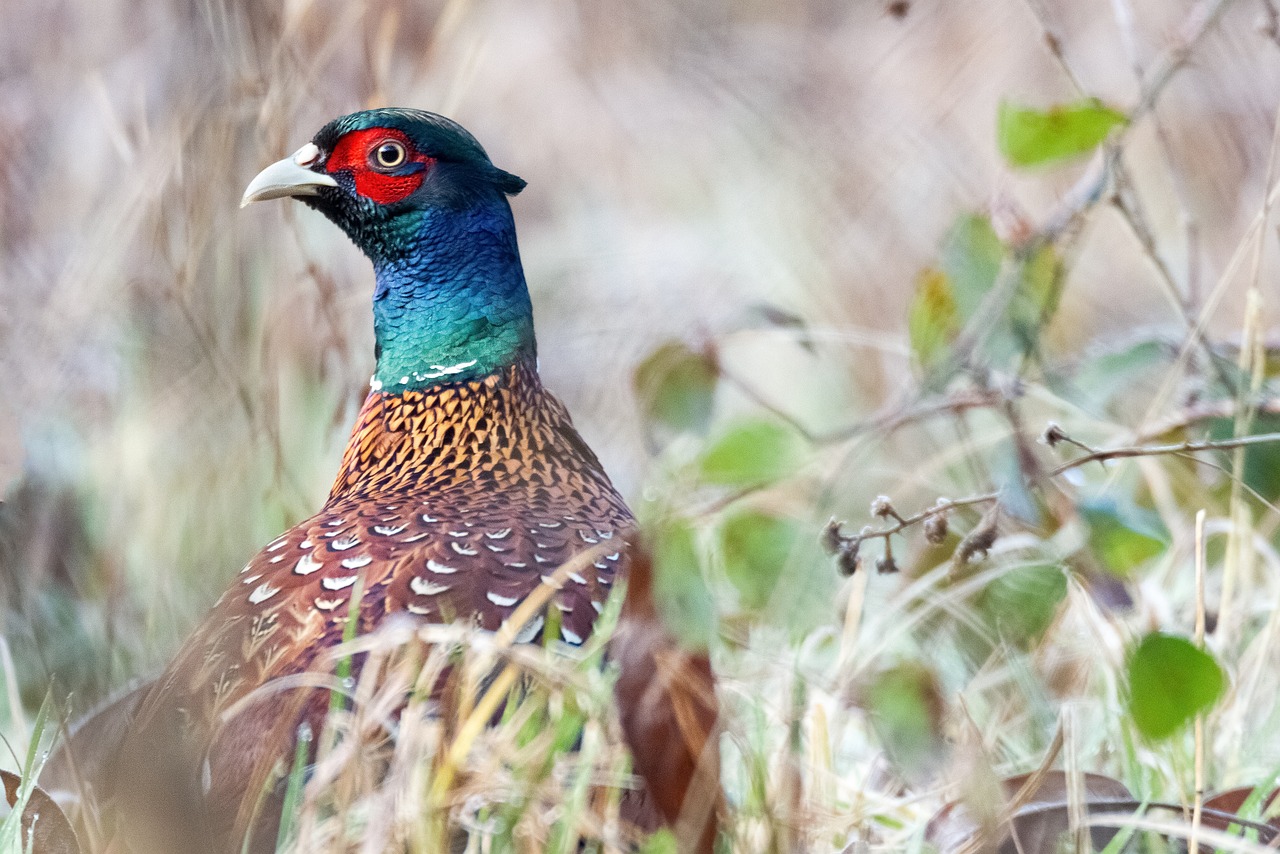
Behavioral Indicators of Consciousness
When we think about consciousness, it’s easy to get lost in the abstract, pondering the depths of thought and awareness. However, one of the most revealing ways to gauge consciousness is through observable behaviors. Animals, much like humans, exhibit a range of behaviors that can hint at their level of consciousness. These behaviors often serve as indicators of cognitive abilities, emotional depth, and social interactions.
For instance, consider problem-solving abilities. Animals such as crows and dolphins have demonstrated remarkable problem-solving skills that suggest a level of reasoning and understanding. Crows, known for their intelligence, have been observed using tools to obtain food, showcasing not just instinct but an ability to think ahead and plan. Similarly, dolphins have been documented engaging in complex social behaviors, such as coordinating hunts and using unique vocalizations to communicate, which indicates a sophisticated level of awareness and interaction.
Another fascinating behavioral indicator is self-awareness. This concept can be explored through various experiments, such as the mirror test, where an animal is placed in front of a mirror to see if it can recognize itself. While this test has its critics, the results can still provide insight into an animal's cognitive abilities. For example, chimpanzees and elephants have passed this test, suggesting they possess a level of self-recognition that is often associated with higher consciousness.
Social interactions also play a crucial role in understanding consciousness. Animals that engage in complex social structures, such as elephants, wolves, and certain primates, exhibit behaviors that imply a deeper understanding of social dynamics. These animals can recognize kin, form alliances, and even display empathy towards one another. Such behaviors point towards a consciousness that is not merely self-serving but also considers the needs and emotions of others.
In summary, the behavioral indicators of consciousness are as varied as the species themselves. From problem-solving and self-awareness to complex social interactions, these behaviors provide a window into the minds of animals. As we continue to study these fascinating creatures, we may uncover even more about the intricate tapestry of consciousness that connects all living beings.
- What are some common behaviors that indicate animal consciousness?
Common behaviors include problem-solving, self-recognition, and complex social interactions. - How do scientists measure consciousness in animals?
Researchers often use behavioral tests, such as the mirror test, along with observations of social behavior and problem-solving skills. - Are there any animals known for exceptional problem-solving abilities?
Crows and dolphins are particularly noted for their advanced problem-solving skills. - Can self-awareness be definitively proven in animals?
While the mirror test is a common method, it has limitations, and not all self-awareness is easily measurable.

Self-Awareness in Animals
Self-awareness is a fascinating concept that has intrigued scientists, philosophers, and animal lovers alike. But what does it really mean for an animal to be self-aware? It goes beyond just recognizing oneself in a mirror; it encompasses a range of cognitive abilities that suggest a deeper understanding of one’s own existence and place in the world. Imagine being able to reflect on your thoughts, feelings, and experiences—not just in a fleeting way, but with a profound understanding of your own identity. This is what self-awareness entails, and it’s a trait that we are beginning to recognize in various animal species.
Research has shown that some animals possess a level of self-awareness that challenges our traditional views of consciousness. For instance, the famous mirror test has been a cornerstone of this research. In this test, an animal is marked with a spot on a part of its body that it cannot see without a mirror. If the animal uses the mirror to investigate and possibly remove the mark, it is taken as evidence of self-recognition. Species like great apes, dolphins, and elephants have passed this test, suggesting they have a sense of self. However, it’s important to note that the mirror test is not infallible and does not encompass all forms of self-awareness.
Beyond the mirror test, researchers are exploring alternative indicators of self-awareness. Some animals demonstrate behaviors that imply a level of introspection, such as:
- Problem-solving abilities: Animals like crows and octopuses exhibit remarkable problem-solving skills, which may indicate a deeper cognitive processing.
- Empathy and social interactions: Elephants and certain primates show behaviors that suggest they can understand the emotions of others, hinting at a complex social awareness.
- Use of tools: The ability to use tools effectively requires not just intelligence but an understanding of one’s own capabilities and the environment.
While the mirror test is a widely recognized measure, it has its limitations. For example, some species may not rely on visual cues as much as humans do, leading to potential underestimations of their self-awareness. Additionally, animals like dogs have shown signs of self-awareness through their ability to respond to human emotions, even if they do not pass the mirror test. This highlights the need for a broader perspective on how we evaluate consciousness and self-awareness in the animal kingdom.
In conclusion, self-awareness in animals is a complex and multifaceted topic. As we continue to study various species, we are uncovering a rich tapestry of cognitive abilities that challenge our understanding of consciousness. The more we learn, the more we realize that self-awareness might not be as unique to humans as we once thought. This invites us to reconsider our relationship with other species and recognize the depth of their experiences and emotions.
Q1: Can all animals be self-aware?
A1: Not all animals exhibit self-awareness, but research has shown that certain species, such as great apes, dolphins, and elephants, demonstrate this ability through various tests and behaviors.
Q2: What is the mirror test?
A2: The mirror test is an experiment used to determine if an animal can recognize itself in a mirror. If an animal investigates a mark on its body using the mirror, it suggests self-recognition.
Q3: Are there limitations to the mirror test?
A3: Yes, the mirror test has limitations. Some animals may not rely on visual cues, and thus may not pass the test despite having self-awareness. This indicates the need for alternative assessments of consciousness.
Q4: How do researchers study self-awareness in animals?
A4: Researchers study self-awareness through various methods, including the mirror test, behavioral observations, and experiments that assess problem-solving, empathy, and social interactions.

Mirror Test and Its Limitations
The mirror test, developed by psychologist Gordon Gallup Jr. in 1970, is a classic experiment designed to assess self-awareness in animals. The premise is simple: an animal is marked with a non-toxic dye in a place it cannot see without a mirror. If the animal uses the mirror to investigate and possibly remove the mark, it is interpreted as a sign of self-recognition, suggesting a level of consciousness akin to that of humans. While many species, including great apes, elephants, and even some birds like magpies, have passed this test, it is essential to recognize its limitations.
One significant limitation of the mirror test is that it relies heavily on visual perception. For instance, species that rely more on other senses, such as smell or echolocation, may not respond to the mirror in the same way. This raises the question: does a failure to pass the mirror test necessarily indicate a lack of self-awareness? Some researchers argue that it might simply reflect the animal's sensory modalities or cognitive processing styles. Moreover, the test may not account for cultural and environmental factors that influence behavior. For example, an animal raised in an environment without mirrors might not understand the concept of reflection, leading to a false negative in self-awareness assessment.
Furthermore, the mirror test has been criticized for being too simplistic. Consciousness is a complex and multifaceted phenomenon, and self-awareness is just one aspect of it. Animals may exhibit self-aware behaviors that do not necessarily involve mirror recognition. For example, elephants have shown behaviors indicative of grief and empathy, which suggest a level of consciousness that transcends what the mirror test can measure. Similarly, dogs and other social animals often demonstrate an understanding of their own actions and the emotions of others, which hints at a rich inner life.
In conclusion, while the mirror test has provided valuable insights into animal consciousness, it is crucial to approach its findings with caution. The limitations of the test highlight the need for a broader understanding of self-awareness and consciousness in the animal kingdom. As we continue to explore the depths of animal cognition, we should remain open to various indicators of consciousness that extend beyond traditional testing methods.
- What is the mirror test? The mirror test is an experiment designed to assess self-awareness in animals by determining if they can recognize themselves in a mirror.
- Which animals have passed the mirror test? Animals such as great apes, elephants, and some birds like magpies have successfully passed the mirror test.
- What are the limitations of the mirror test? The mirror test may not accurately reflect self-awareness in species that rely on senses other than vision, and it may oversimplify the complex nature of consciousness.
- Are there alternative methods to assess animal consciousness? Yes, researchers are exploring various behaviors and cognitive abilities that may indicate self-awareness, such as empathy and problem-solving skills.

Alternative Indicators of Self-Awareness
While the mirror test is often the go-to method for assessing self-awareness in animals, it certainly isn't the only game in town. In fact, there are numerous alternative indicators that researchers have explored, providing a more nuanced understanding of self-awareness across species. Think of it like trying to measure intelligence: just because someone doesn't excel in traditional tests doesn't mean they lack smarts. Similarly, animals might display self-awareness in ways that don't fit neatly into our preconceived notions.
One fascinating alternative is the concept of problem-solving abilities. Animals that can navigate complex tasks, especially those that require planning and foresight, may be demonstrating a level of self-awareness. For example, certain species of crows and primates have shown remarkable skills in using tools, which suggests an understanding of their environment and their own capabilities. These problem-solving feats often involve a degree of self-recognition—the animal must understand its own actions and their implications.
Another indicator worth mentioning is social behavior. Animals that engage in complex social interactions, such as empathy or cooperation, may possess a form of self-awareness. For instance, elephants have been observed mourning their dead, displaying behaviors that suggest an understanding of loss and perhaps even a sense of their own mortality. This emotional depth hints at a consciousness that transcends mere instinct.
Moreover, researchers have begun to look at neurological studies as a means to gauge self-awareness. By examining brain activity during various tasks, scientists can identify patterns that suggest a level of consciousness. For example, studies involving brain scans of dolphins and elephants have shown similarities in brain structures associated with self-awareness, indicating that these animals might experience consciousness in ways that are comparable to humans.
In addition to these methods, the use of behavioral experiments that assess an animal’s understanding of its own body and actions can also serve as a powerful indicator. For instance, some animals have been tested in scenarios where they must recognize their own reflection in a way that goes beyond the mirror test. This can include tasks where they need to use their reflection to navigate through obstacles or retrieve food, showcasing a more complex understanding of their own existence.
Ultimately, these alternative indicators of self-awareness challenge the idea that a single test can encapsulate the rich tapestry of consciousness that exists in the animal kingdom. Just like humans exhibit self-awareness through various forms—be it through art, communication, or emotional expression—animals, too, may have their unique ways of demonstrating this profound trait. As we continue to explore these alternative avenues, we deepen our understanding and appreciation of the intricate minds that share our planet.
- What is self-awareness in animals? Self-awareness in animals refers to their ability to recognize themselves as distinct entities, often demonstrated through behaviors such as self-recognition and complex problem-solving.
- Are there animals that pass the mirror test? Yes, some species, including great apes, dolphins, and elephants, have shown the ability to recognize themselves in mirrors, indicating a level of self-awareness.
- What are some alternative methods to assess self-awareness? Alternatives include observing problem-solving abilities, social interactions, and neurological studies that examine brain activity related to self-recognition.
- Why is understanding animal consciousness important? Understanding animal consciousness helps us better appreciate their emotional and cognitive capacities, which can influence how we treat and interact with other species.

The Role of Language in Consciousness
Language is often regarded as the cornerstone of human consciousness, acting as a powerful tool that shapes our thoughts, emotions, and interactions with the world around us. But have you ever wondered how language influences not only our perception of reality but also our understanding of consciousness itself? While humans possess a complex linguistic ability that allows for abstract thinking and complex social interactions, the question arises: do any non-human species exhibit similar capabilities that hint at a form of consciousness akin to ours?
To explore this intriguing question, we must first consider the intricate relationship between language and thought. Language enables us to articulate our experiences, share ideas, and reflect on our existence, which are all fundamental aspects of consciousness. In essence, language acts as a mirror, reflecting our cognitive processes and allowing us to navigate the complexities of our inner worlds. This connection leads us to examine whether other species can communicate in ways that suggest a comparable level of consciousness.
When we observe the animal kingdom, we find a fascinating array of communication methods, from the intricate songs of birds to the complex gestures of primates. For instance, many animals use vocalizations, body language, and even chemical signals to convey information. However, the question remains: how do these methods compare to human language? While animal communication can be sophisticated, it often lacks the grammatical structure and symbolic richness that characterize human languages. This raises the possibility that, although some animals may possess a level of consciousness, it might not be expressed in the same way as ours.
One of the most compelling areas of study in this context is the research on language acquisition in primates. Studies have shown that certain primates, such as chimpanzees and bonobos, can learn to use sign language or symbol-based communication systems. For example, the famous chimpanzee Washoe was able to learn over 350 signs, demonstrating an ability to communicate desires, emotions, and even create novel combinations of signs. This ability suggests a level of cognitive processing that parallels aspects of human consciousness. However, critics argue that while these animals can mimic human-like communication, it does not necessarily indicate a true understanding of language in the same way humans experience it.
In light of these observations, it becomes essential to consider the implications of language on our understanding of consciousness. If language is a fundamental aspect of consciousness, does it follow that the absence of complex language in other species indicates a lack of consciousness? Or could it be that consciousness manifests in various forms, some of which may not rely on language as we know it? This leads us to ponder the broader spectrum of consciousness that exists within the animal kingdom.
In conclusion, the role of language in consciousness is a multifaceted topic that invites us to explore the boundaries of our understanding. While humans use language as a tool for expressing consciousness, the potential for other species to exhibit forms of consciousness through their unique communication methods cannot be overlooked. As we continue to study the cognitive abilities of animals, we may uncover new insights that challenge our preconceived notions of what it means to be conscious.
- Do animals have their own form of language? Yes, many animals communicate using various methods, including vocalizations, body language, and chemical signals, though these may not be as complex as human language.
- Can animals understand human language? Some animals, particularly primates, have been shown to understand basic commands and can even learn to use sign language or symbols to communicate.
- Is consciousness exclusive to humans? While humans exhibit a unique form of consciousness, many researchers believe that varying levels of consciousness exist among different animal species.
- How does language shape our consciousness? Language allows us to articulate thoughts and emotions, facilitating complex social interactions and self-reflection, which are essential aspects of consciousness.
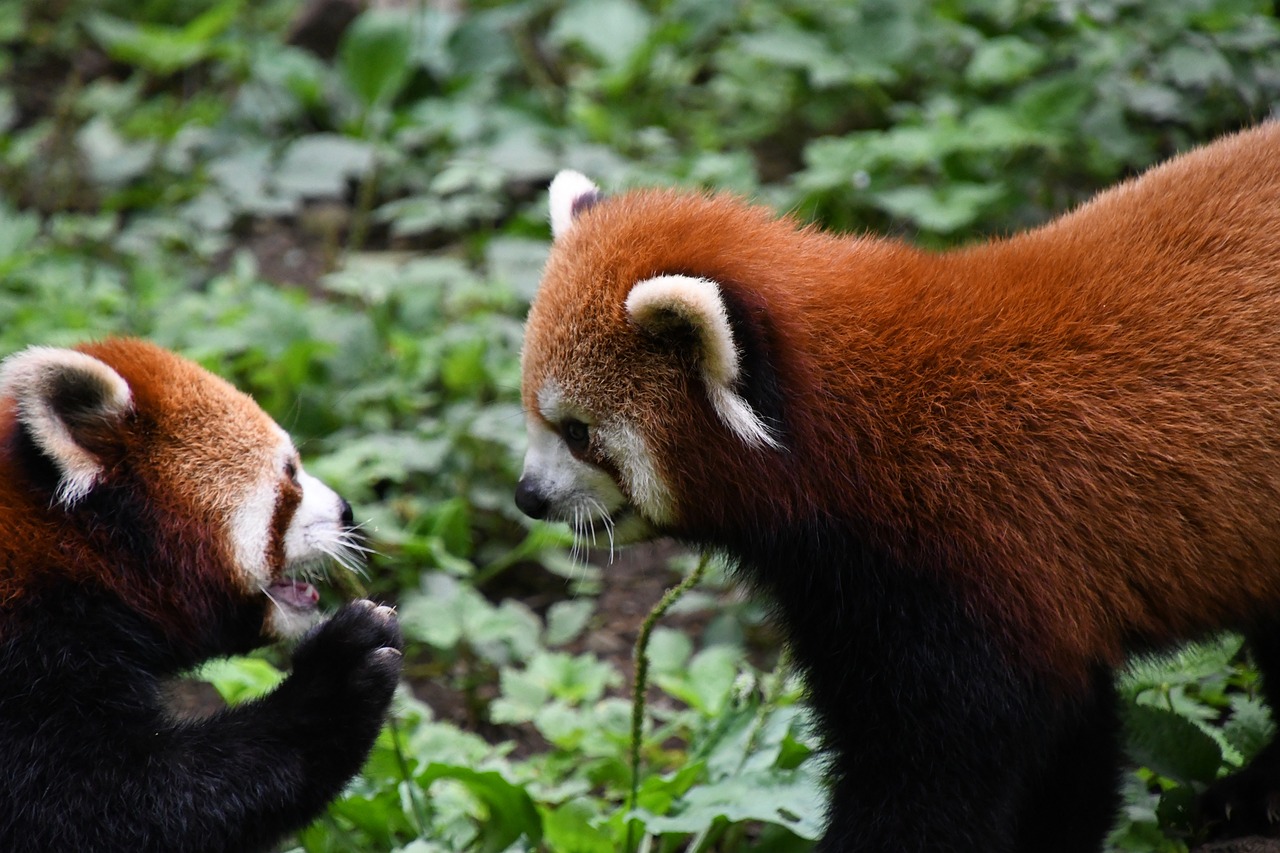
Communication in Animals
When we think about communication, our minds often jump to the complex languages humans use to express emotions, ideas, and information. However, the animal kingdom boasts a fascinating array of communication methods that can be just as intricate, albeit in different ways. From the melodious songs of birds to the intricate dances of bees, animals have evolved unique systems to convey messages essential for their survival and social interaction.
Take, for instance, the way dolphins communicate. These intelligent marine mammals use a combination of clicks, whistles, and body language to convey messages to one another. Their sophisticated vocalizations can be thought of as a form of language, capable of expressing a wide range of emotions and intentions. Studies have shown that dolphins can even recognize themselves in mirrors, suggesting a level of self-awareness that adds depth to their communicative abilities.
Similarly, primates also exhibit remarkable communication skills. For example, chimpanzees use a variety of vocalizations, gestures, and facial expressions to interact with one another. Researchers have documented instances of chimpanzees using specific calls to indicate the presence of predators, showcasing an understanding of cause and effect that hints at a more complex cognitive process. In this light, one could argue that the foundations of consciousness might be reflected in these communication patterns.
Moreover, the communication strategies employed by social insects like ants and bees are equally astounding. Ants, for example, use pheromones to relay information about food sources, danger, and even the location of their nest. This chemical communication is not just a simple signal; it provides a complex, nuanced understanding of their environment and the needs of their colony. Similarly, honeybees perform a "waggle dance" to inform their hive mates about the direction and distance of food sources, showcasing a form of communication that is both precise and effective.
While these examples demonstrate the diversity of communication in the animal kingdom, they also raise intriguing questions about the relationship between communication and consciousness. Can the ability to communicate complex ideas indicate a higher level of consciousness? Or is it merely a survival mechanism honed by evolution? As researchers continue to study these fascinating behaviors, we gain deeper insights into the cognitive abilities of various species and their potential consciousness.
In summary, communication in the animal kingdom is a rich tapestry woven from various threads of vocalizations, gestures, and chemical signals. Each species has developed its own unique methods to convey essential information, reflecting not only their survival strategies but also their cognitive complexities. As we unravel these communication methods, we inch closer to understanding the nuances of consciousness across different species.
- What is the most complex form of animal communication? While many species exhibit complex communication, dolphins and certain primates, like chimpanzees, are often cited for their sophisticated vocalizations and gestures.
- Do animals have their own languages? Many animals use specific sounds or signals to communicate, which can be considered a form of language, though it may not be as complex as human language.
- Can animals understand human language? Some animals, particularly dogs and primates, can learn to understand basic commands and phrases, indicating a level of comprehension of human language.
- How do scientists study animal communication? Researchers use observational studies, experiments, and technology like sound analysis to investigate how animals communicate and what their signals mean.

Language Acquisition in Primates
The study of has fascinated researchers for decades, offering profound insights into the cognitive abilities of our closest relatives. Primates, particularly species like chimpanzees, bonobos, and gorillas, have shown remarkable capabilities in understanding and using symbols, which raises intriguing questions about the nature of their consciousness. Through various experiments, scientists have observed that these animals can learn to associate specific sounds or signs with objects or actions, demonstrating a level of comprehension that suggests a rudimentary form of language.
One of the most notable examples is the work done with Koko the gorilla, who was taught American Sign Language (ASL). Koko reportedly learned over 1,000 signs and could even combine them to express complex ideas. For instance, when asked about her pet kitten, she signed "cat" and "finger" to indicate her desire to pet it. This ability to combine signs illustrates not only a grasp of vocabulary but also an understanding of syntax, which is a fundamental aspect of human language. Such findings challenge the long-held belief that language is exclusively a human trait, prompting a reevaluation of what constitutes conscious thought and communication.
Moreover, researchers have conducted studies on the use of lexigrams—symbolic representations of words—by primates like Washoe and Kanzi. Washoe, a chimpanzee, was able to use lexigrams to communicate her needs and desires, while Kanzi, a bonobo, demonstrated an ability to understand spoken English and respond appropriately using lexigrams. These experiments suggest that primates possess a level of cognitive flexibility that allows them to engage in meaningful communication, albeit in a manner that is fundamentally different from human language.
However, the question remains: does this ability to acquire and use symbols equate to true language? Critics argue that while primates can learn to associate signs with meanings, they lack the spontaneous creativity and grammatical structure inherent in human language. Unlike humans, whose language evolves and adapts dynamically, primate communication appears more limited and less structured. Nonetheless, the ongoing research into primate language acquisition continues to provide invaluable insights into the evolutionary roots of language and consciousness.
In conclusion, the exploration of language acquisition in primates not only sheds light on the cognitive capabilities of these animals but also invites us to reflect on the very essence of consciousness itself. As we delve deeper into the intricacies of animal communication, we may find that the line separating human and non-human consciousness is not as clear-cut as once thought. This ongoing dialogue between the fields of linguistics, psychology, and neuroscience will undoubtedly yield further revelations about the nature of our shared cognitive heritage.
- Can primates learn human languages?
While primates cannot speak human languages in the traditional sense, many have demonstrated the ability to understand and use sign language or symbols to communicate. - What does language acquisition in primates tell us about human consciousness?
It suggests that the roots of language and consciousness may be shared, indicating a more complex cognitive landscape in non-human species than previously acknowledged. - Are there limitations to the language abilities of primates?
Yes, while primates can learn to use symbols and signs, their communication lacks the grammatical complexity and spontaneous creativity found in human language.

Philosophical Perspectives on Consciousness
The exploration of consciousness is not just a scientific endeavor; it also delves deep into the realms of philosophy. For centuries, thinkers have grappled with the question of what consciousness truly is and how it manifests in both humans and animals. One of the central themes in this philosophical discourse is the distinction between dualism and materialism. Dualism posits that the mind and body are separate entities, suggesting that consciousness exists independently of the physical brain. This perspective raises intriguing questions: If consciousness is non-physical, what does that mean for our understanding of identity and existence? On the other hand, materialism argues that consciousness arises from physical processes within the brain. This view aligns closely with scientific findings, suggesting that consciousness is a product of neural activity.
Philosophical inquiry into consciousness also touches on the implications of consciousness for ethical considerations. If we accept that certain animals possess a level of consciousness, we must confront the moral responsibilities we hold towards them. This leads to a critical examination of how we treat non-human species and the ethical ramifications of our actions. For instance, should animals with self-awareness and complex emotional lives be afforded rights similar to those of humans? The debate is ongoing, and it challenges us to rethink our relationship with the animal kingdom.
To further illustrate these philosophical perspectives, consider the following table that summarizes key differences between dualism and materialism:
| Aspect | Dualism | Materialism |
|---|---|---|
| Nature of Consciousness | Non-physical, separate from the body | Physical, arising from brain activity |
| Identity | Mind as distinct from the body | Mind as a function of the brain |
| Ethical Implications | Potential rights for conscious beings | Focus on welfare based on cognitive abilities |
As we navigate through these philosophical waters, we are also reminded of the importance of consciousness in shaping our identities. The way we perceive ourselves, our thoughts, and our interactions with others is deeply intertwined with our conscious experience. This leads to profound questions: What does it mean to be aware? How does consciousness shape our reality? These inquiries are not just academic; they resonate with our everyday lives and influence how we relate to the world around us.
In conclusion, the philosophical perspectives on consciousness invite us to ponder the very essence of our being and our place within the animal kingdom. As we continue to explore these ideas, we must remain open to the complexities of consciousness, recognizing that it is a multifaceted phenomenon that transcends simple definitions. Our understanding of consciousness will likely evolve as we uncover more about ourselves and the other beings with whom we share this planet.
- What is consciousness? Consciousness is the state of being aware of and able to think about one's own existence, thoughts, and surroundings.
- Do animals have consciousness? Many scientists and philosophers believe that certain animals exhibit signs of consciousness, particularly those with complex nervous systems.
- What are the ethical implications of animal consciousness? Recognizing that some animals possess consciousness may lead to calls for better treatment and rights for these beings.
- How does language relate to consciousness? Language is often seen as a reflection of complex thought processes, and its presence in certain animal species may suggest a form of consciousness.

Dualism vs. Materialism
The debate between dualism and materialism has long been a cornerstone of philosophical discussions surrounding consciousness. At its core, dualism posits that the mind and body are fundamentally different entities; the mind is non-physical and transcends the physical brain. This perspective suggests that consciousness exists independently of the biological processes of the body, leading to intriguing questions about the nature of existence and identity. Think of it like a computer and its software: while the hardware (the brain) is essential for the software (the mind) to run, dualists argue that the software can exist in a realm beyond the physical.
On the other hand, materialism asserts that everything, including consciousness, is a result of physical processes. According to this view, consciousness arises from the intricate workings of the brain's neural networks. Materialists argue that all thoughts, feelings, and experiences can eventually be explained through the lens of biology and neuroscience. Imagine a complex machine where every cog and wheel contributes to the overall functioning; in this analogy, consciousness is simply a byproduct of the machine's operations.
To illustrate the differences between these two perspectives, consider the following table:
| Aspect | Dualism | Materialism |
|---|---|---|
| Nature of Mind | Non-physical, distinct from the body | Physical, a product of brain activity |
| Existence After Death | Possible existence of the soul | No existence after biological death |
| Scientific Basis | Less empirical support | Strongly supported by neuroscience |
| Identity | Spiritual essence | Biological and psychological continuity |
This philosophical divide raises significant questions about how we understand consciousness not only in humans but also in animals. If dualism holds true, it might suggest that certain animals possess a form of consciousness that is qualitatively different from our own, possibly granting them a unique essence or soul. Conversely, if materialism is correct, then consciousness could be viewed as a spectrum, where different species exhibit varying degrees of cognitive complexity based on their neurological structures.
Ultimately, the dualism versus materialism debate not only shapes our understanding of consciousness but also influences ethical considerations regarding the treatment of animals. If we accept that animals have a form of consciousness akin to ours, it raises profound implications for how we interact with them and the moral responsibilities we bear.
- What is dualism? Dualism is the philosophical belief that the mind and body are separate entities, with the mind being non-physical.
- What is materialism? Materialism posits that everything, including consciousness, is a result of physical processes and can be explained through biology.
- How do dualism and materialism affect our understanding of animal consciousness? These perspectives influence whether we view animal consciousness as similar to human consciousness or as fundamentally different.
- What are the ethical implications of these views? Understanding consciousness in animals can affect how we treat them and our moral responsibilities towards them.
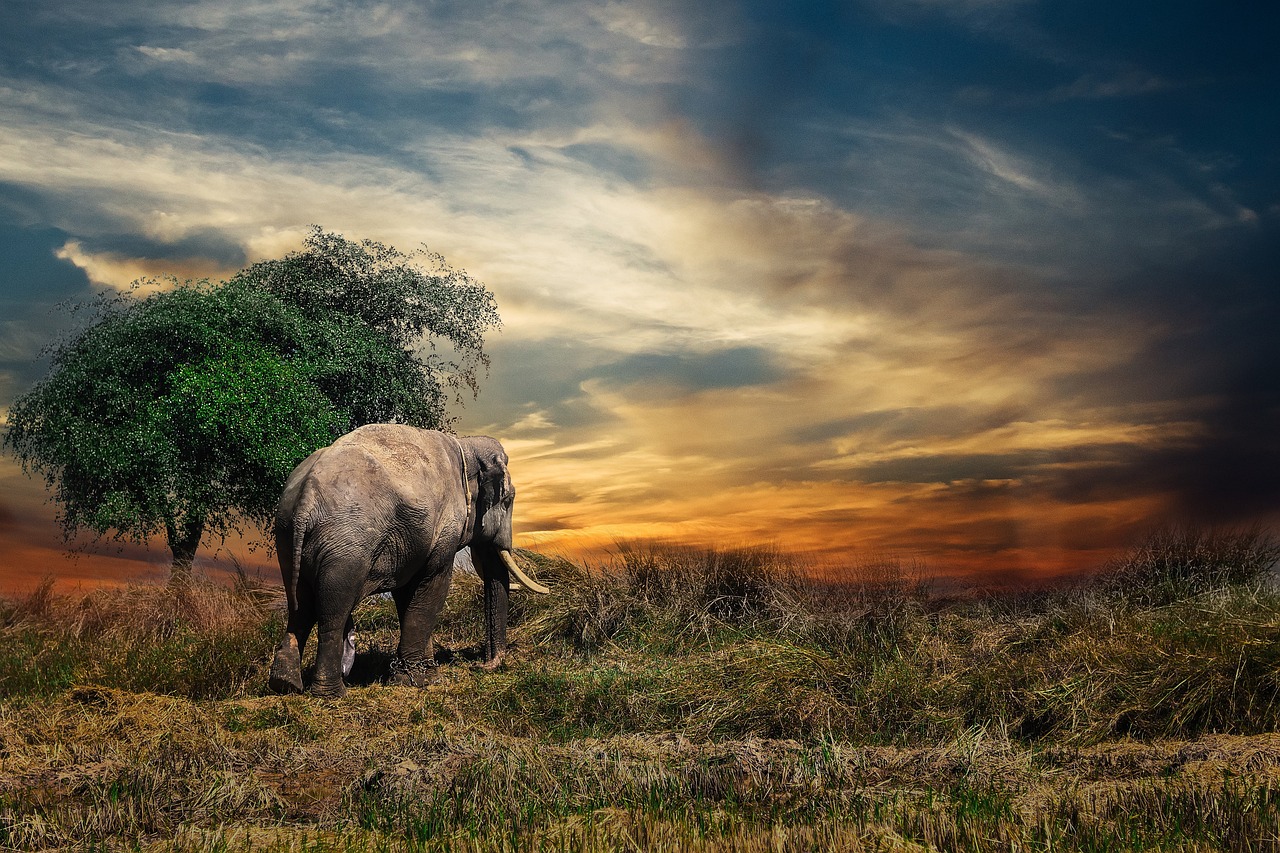
Ethical Implications of Consciousness
The exploration of consciousness extends far beyond the realm of science and philosophy; it delves into the moral fabric of our society. As we uncover the layers of consciousness in both humans and animals, we are confronted with profound ethical questions: What responsibilities do we bear towards sentient beings? How does our understanding of consciousness shape our treatment of other species? These inquiries are not merely academic; they resonate deeply in our practices, policies, and daily interactions with the animal kingdom.
To begin with, the acknowledgment of consciousness in animals compels us to reassess our ethical obligations. If certain animals exhibit signs of self-awareness, emotional depth, and complex social interactions, should we not extend to them the same considerations we afford to human beings? The implications are significant, particularly in industries such as agriculture, research, and entertainment, where animals are often subjected to conditions that disregard their potential for suffering and emotional experience.
For instance, consider the practices involved in factory farming. The industrialized approach to animal husbandry often prioritizes profit over welfare, leading to overcrowded and inhumane conditions. If we accept that animals possess a degree of consciousness, it becomes ethically imperative to advocate for more humane treatment. This perspective can be summarized in the following key points:
- Welfare Standards: The need for stringent welfare standards that recognize the emotional and cognitive capabilities of animals.
- Research Ethics: The ethical considerations surrounding the use of animals in scientific research, including the necessity of minimizing suffering.
- Conservation Efforts: The responsibility to protect species that exhibit signs of consciousness, ensuring their habitats and social structures are preserved.
Moreover, the ethical implications of consciousness challenge the very foundations of how we define rights. If we accept that certain animals possess consciousness similar to our own, it raises the question: should they be granted rights? This concept is gaining traction, with movements advocating for animal rights based on their capacity for suffering and emotional experiences. The idea of extending legal rights to animals is not just a radical proposition; it reflects a growing recognition of their sentience and the moral obligation we have to protect them.
In addressing these ethical dilemmas, it’s crucial to engage in open dialogue that includes diverse perspectives—from scientists and ethicists to animal rights activists and the general public. This conversation can help us navigate the complexities of consciousness and its implications for our actions. As we strive to understand the intricacies of consciousness, we must also grapple with the responsibility that comes with that knowledge.
In summary, the ethical implications of consciousness are profound and multifaceted. They compel us to reconsider our relationship with the animal kingdom, urging us to advocate for the rights and welfare of sentient beings. As we continue to explore the depths of consciousness, let us not forget the moral responsibilities that accompany this understanding, fostering a world where all beings are treated with dignity and respect.
- What is consciousness? Consciousness refers to the state of being aware of and able to think and perceive one's surroundings, thoughts, and feelings.
- Do all animals have consciousness? While many animals exhibit signs of consciousness, the extent and nature of that consciousness can vary significantly across species.
- Why is understanding animal consciousness important? Understanding animal consciousness is crucial for ethical treatment, conservation efforts, and improving welfare standards in various industries.
- What are the implications of recognizing animal consciousness? Recognizing animal consciousness can lead to changes in laws, ethical standards in research, and better welfare practices in agriculture and entertainment.
Frequently Asked Questions
- What is consciousness, and why is it important?
Consciousness refers to our awareness of ourselves and our environment. It's crucial because it shapes our thoughts, emotions, and behaviors, influencing how we interact with the world and each other.
- How does human consciousness differ from that of other animals?
Human consciousness is often considered more complex due to our advanced cognitive abilities, such as abstract thinking, problem-solving, and self-awareness. While some animals exhibit signs of consciousness, the depth and breadth of human thought processes are generally deemed unique.
- What evolutionary factors contributed to the development of consciousness?
The evolution of consciousness likely stems from survival needs, where complex social interactions and environmental challenges favored the development of advanced cognitive skills. Over time, this led to the sophisticated mental capabilities seen in humans today.
- Are there specific brain structures that are key to consciousness?
Yes! The neocortex plays a significant role in human consciousness, facilitating higher-order functions like reasoning and decision-making. Comparative studies show differences in brain structures between humans and other animals, which may account for variations in consciousness levels.
- What behavioral signs indicate consciousness in animals?
Observable behaviors such as problem-solving, social interactions, and self-recognition are indicators of consciousness in animals. For example, animals that can use tools or demonstrate empathy often show higher cognitive functioning.
- What is the mirror test, and what are its limitations?
The mirror test assesses self-awareness by determining if an animal can recognize itself in a mirror. However, its limitations include cultural differences among species and the possibility that some animals may not rely on visual cues for self-recognition.
- Can animals communicate in ways that suggest consciousness?
Absolutely! Many animals have complex communication systems that convey emotions and intentions. This complexity can hint at a form of consciousness, as it shows the ability to share information and express thoughts.
- What ethical implications arise from our understanding of animal consciousness?
Recognizing that animals may possess varying levels of consciousness raises ethical questions about their treatment. It challenges us to consider their rights and welfare, influencing how we approach issues like animal testing, farming, and conservation.
- How do philosophical perspectives shape our understanding of consciousness?
Philosophical debates, like dualism versus materialism, influence how we interpret consciousness. These perspectives affect our views on identity, existence, and the moral status of both humans and animals, shaping societal attitudes toward consciousness.

